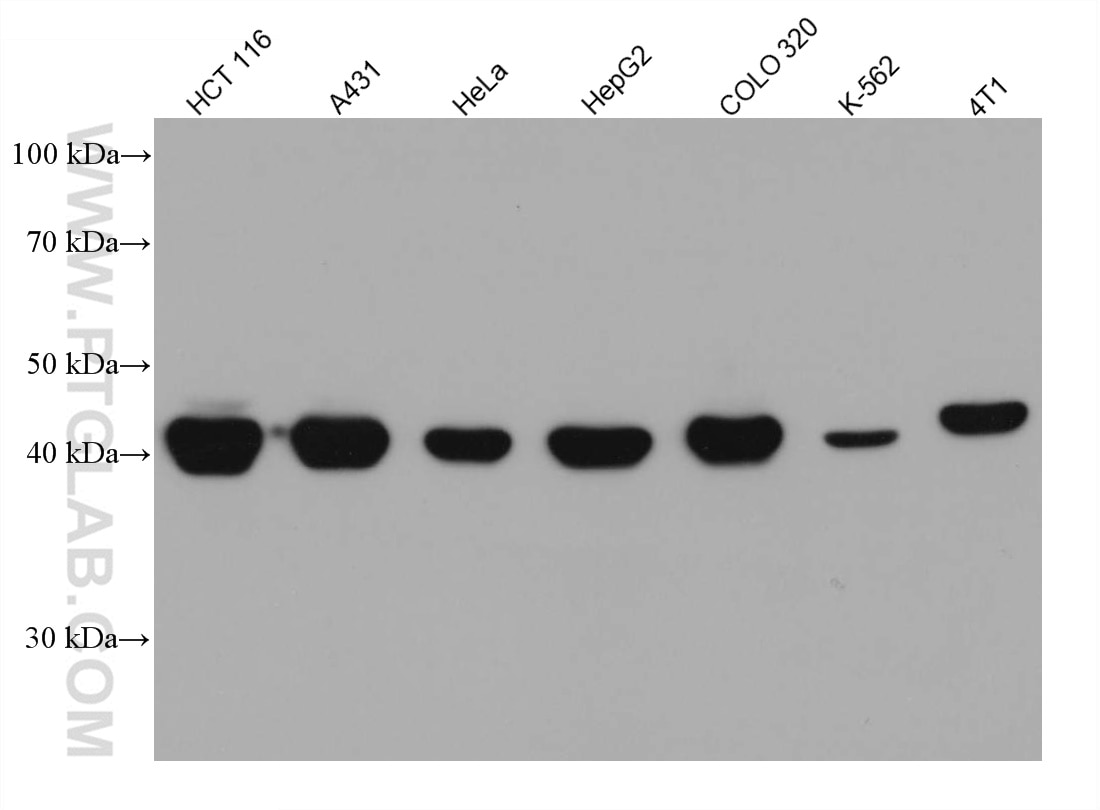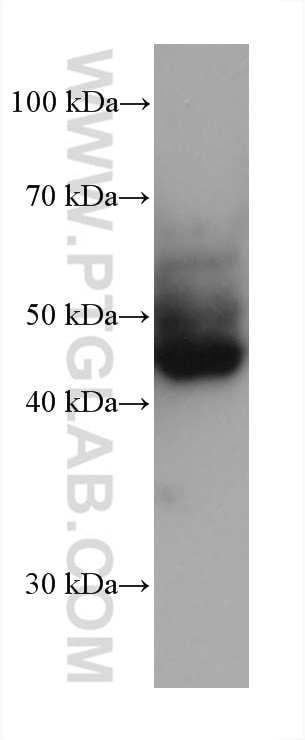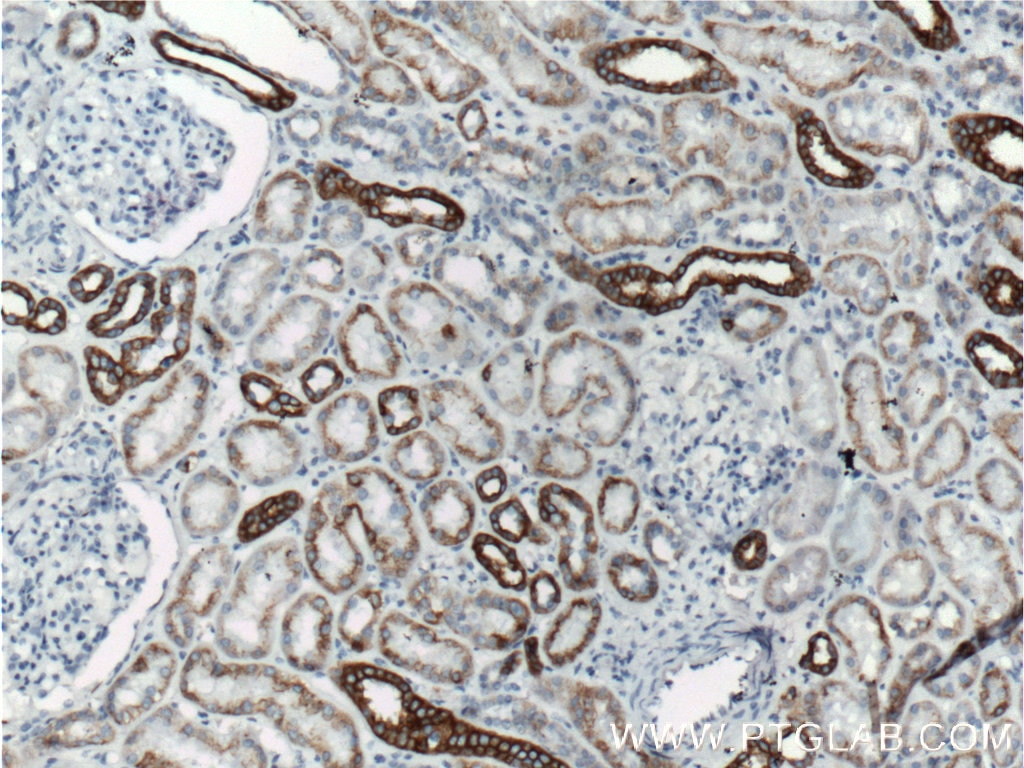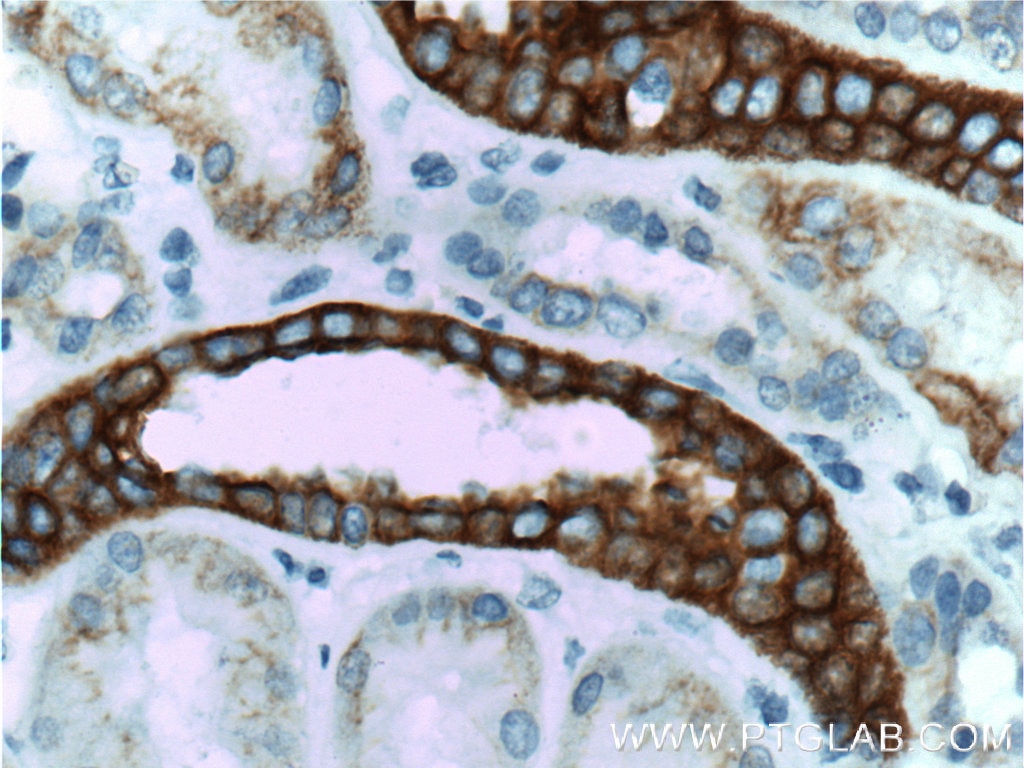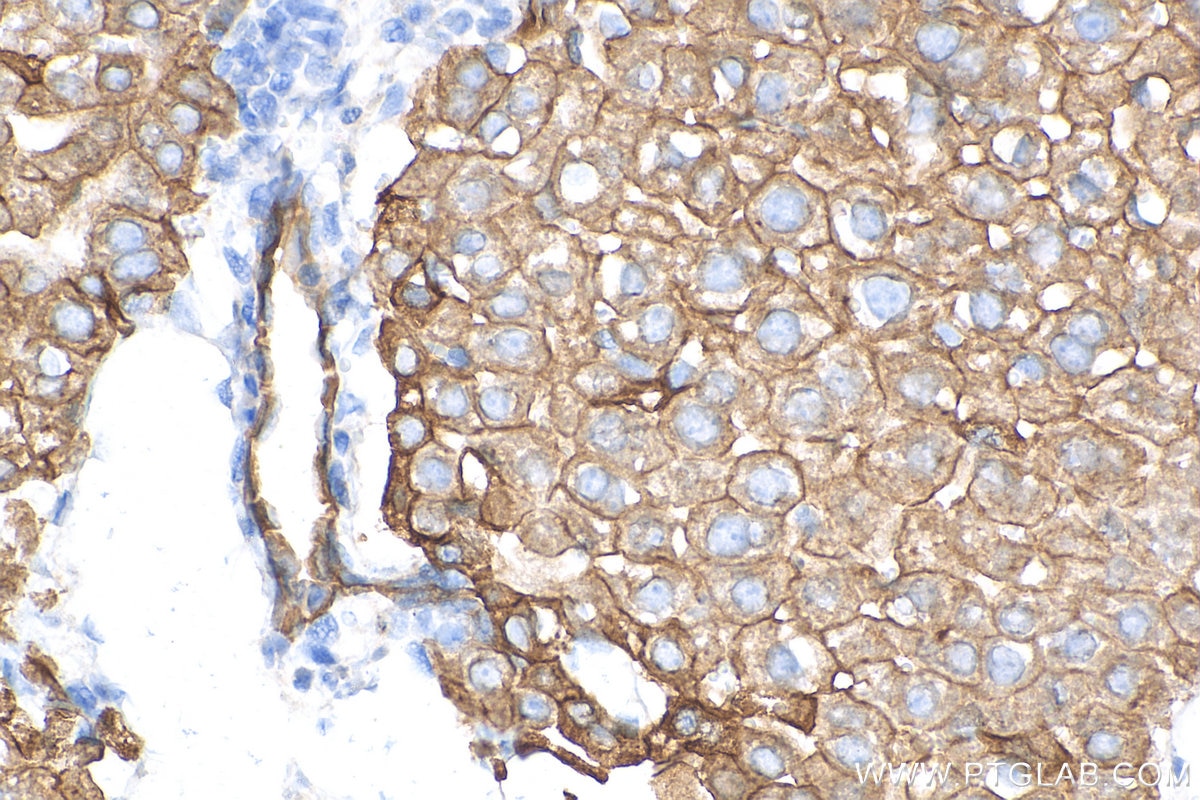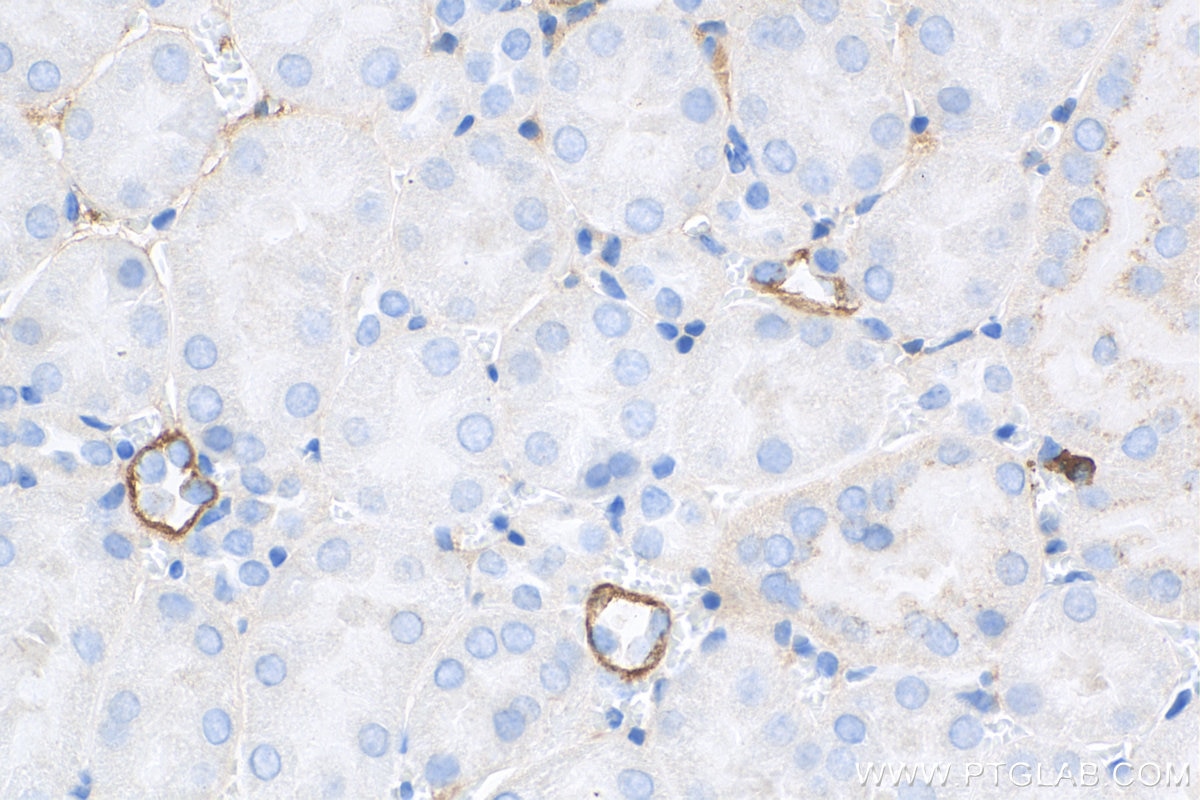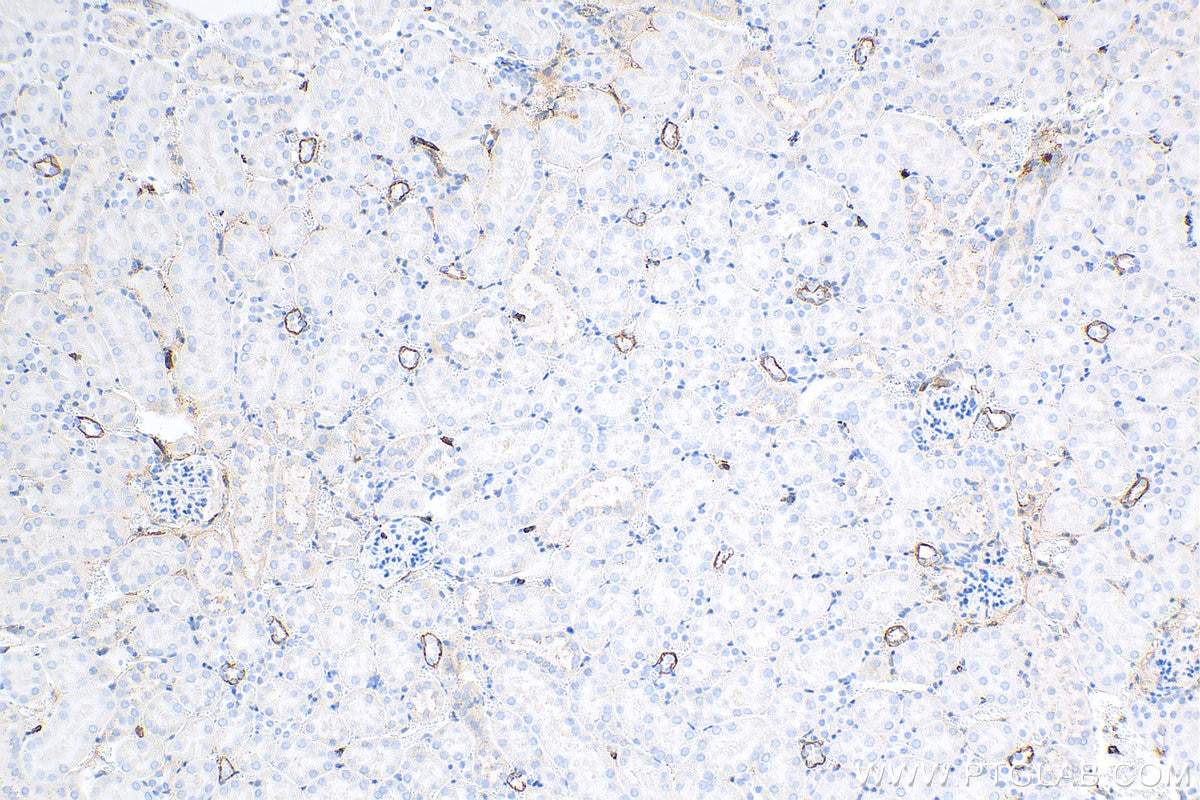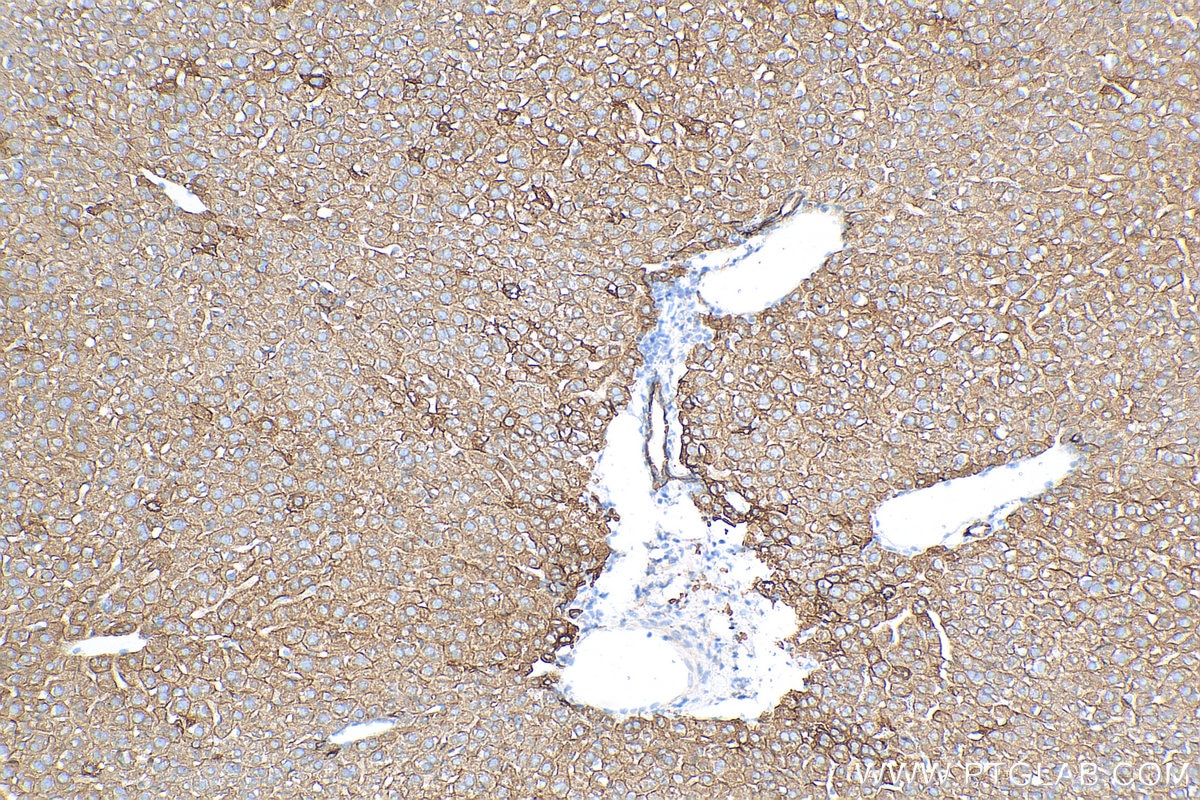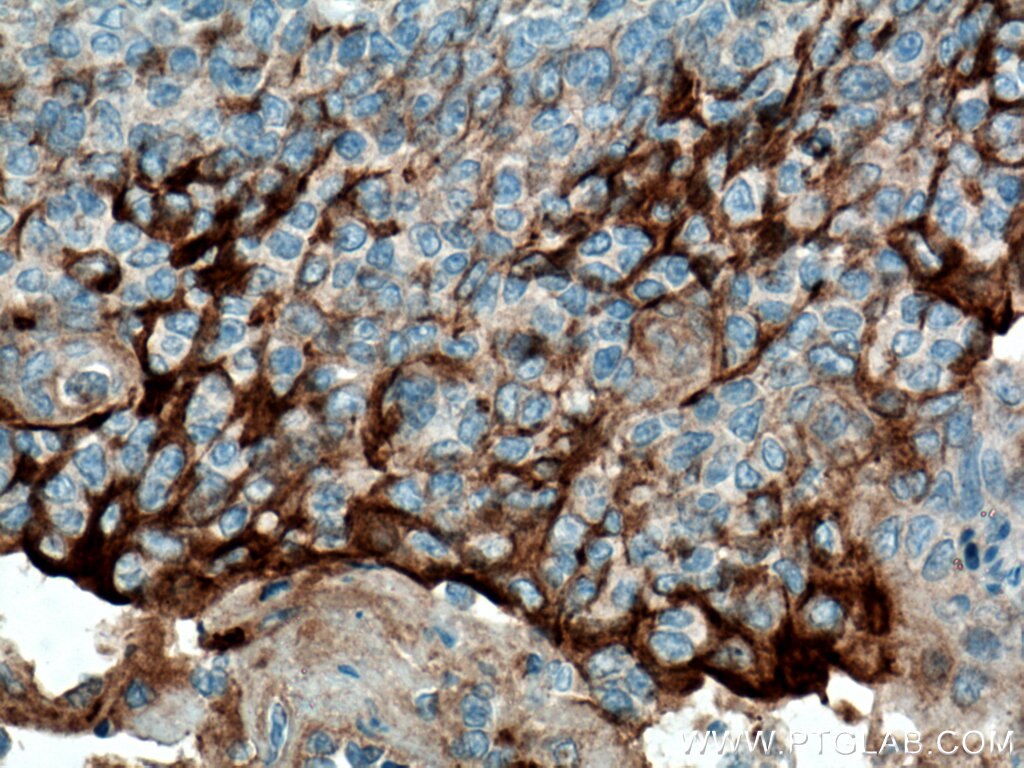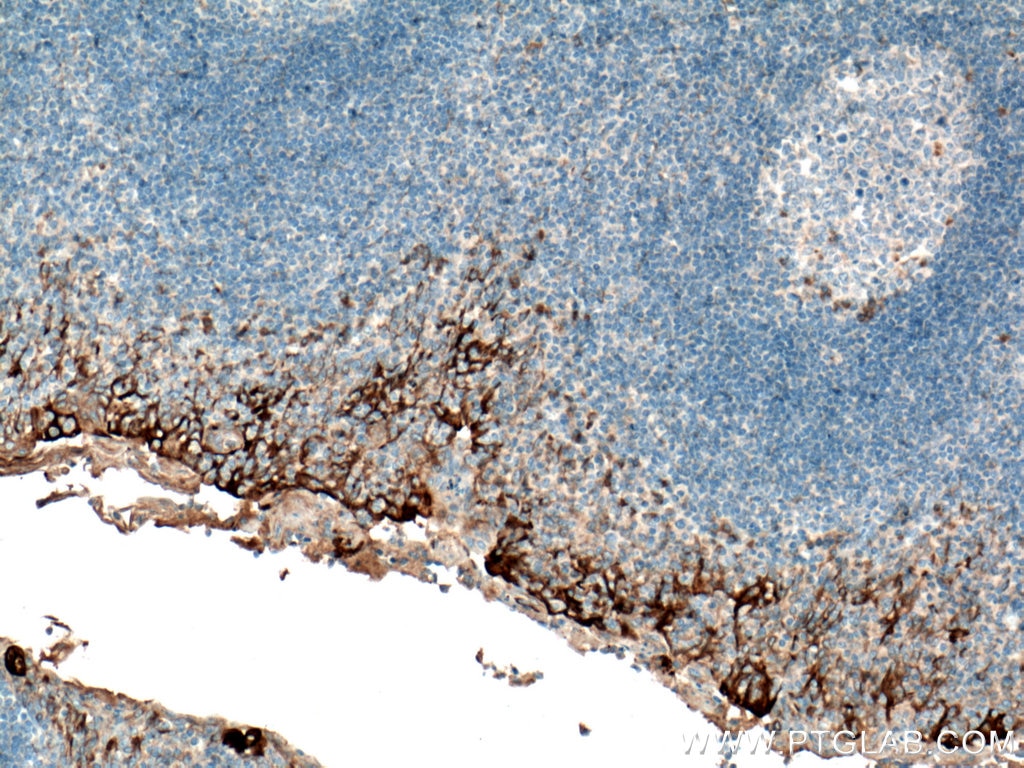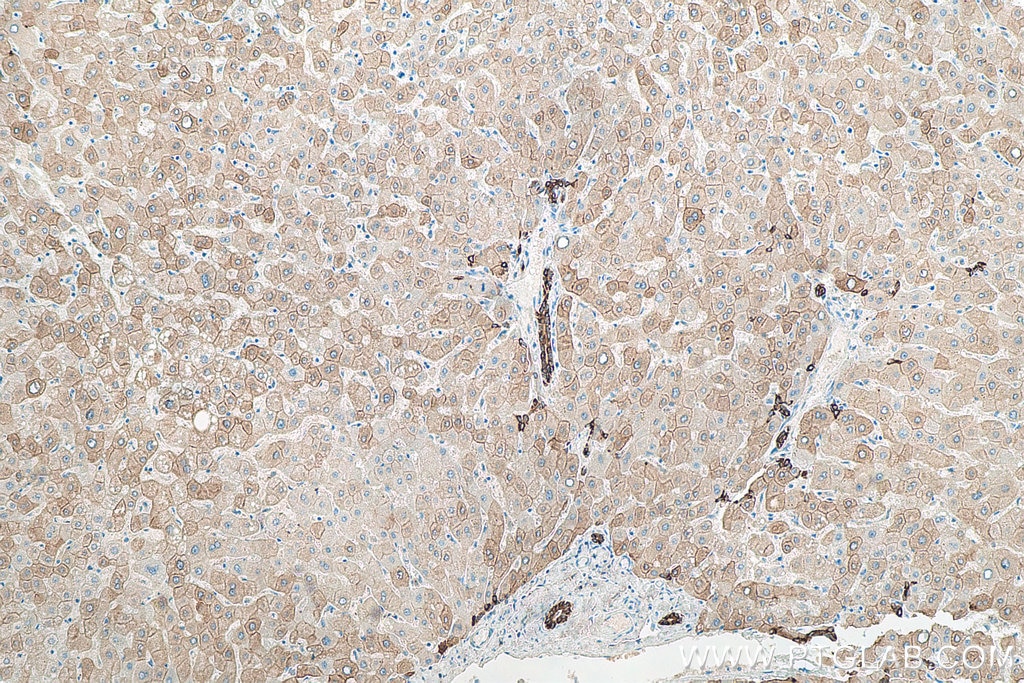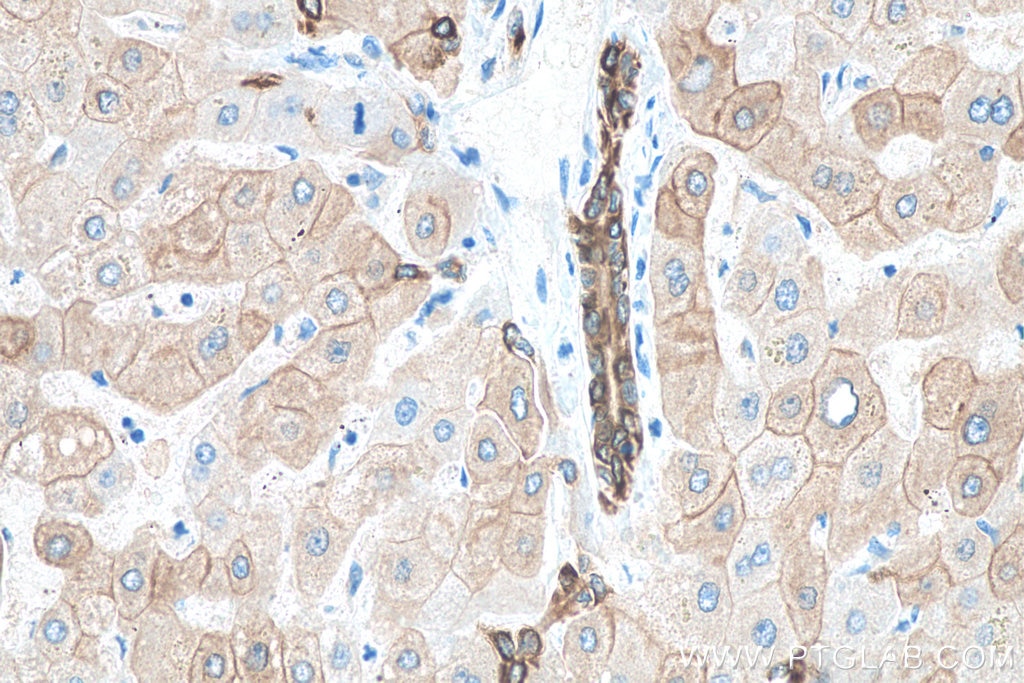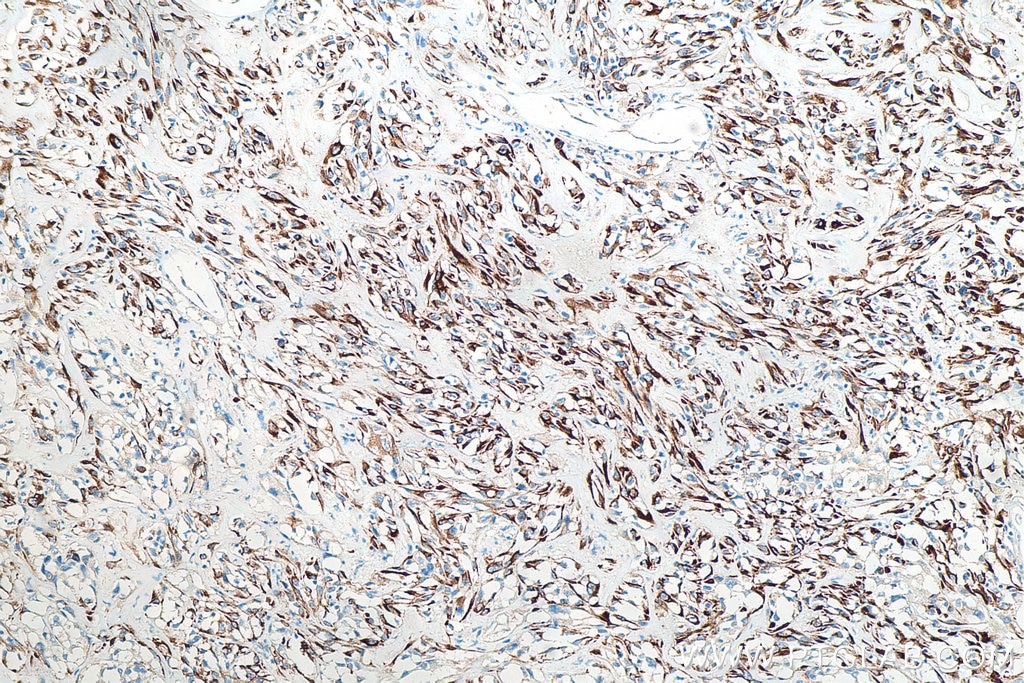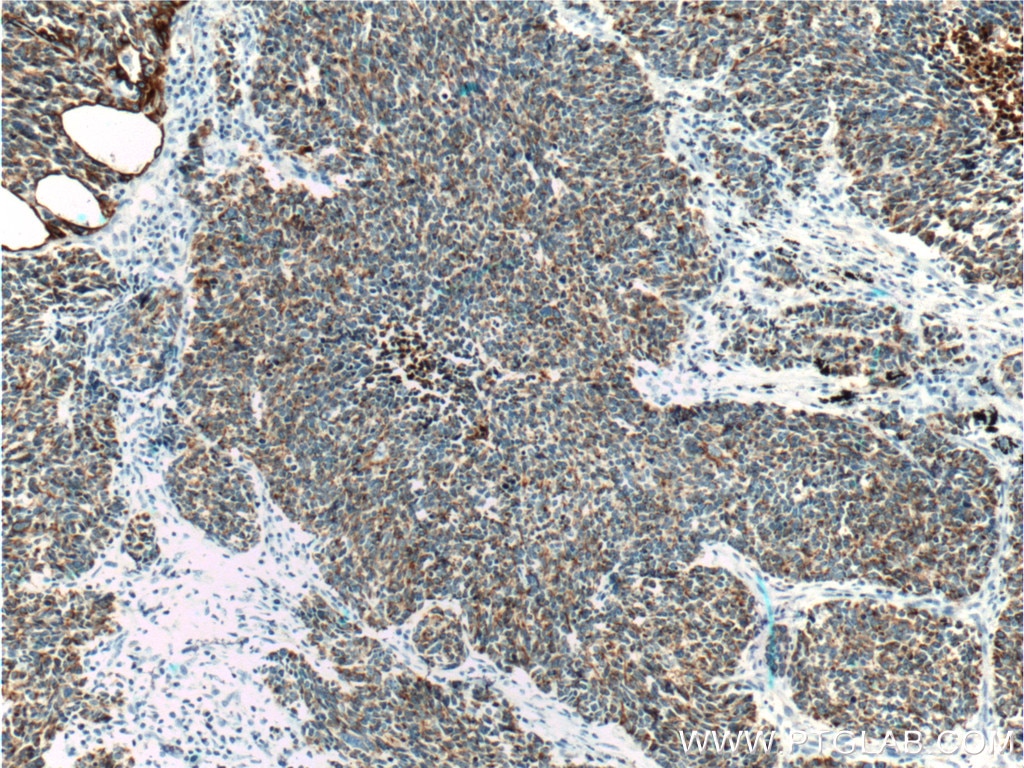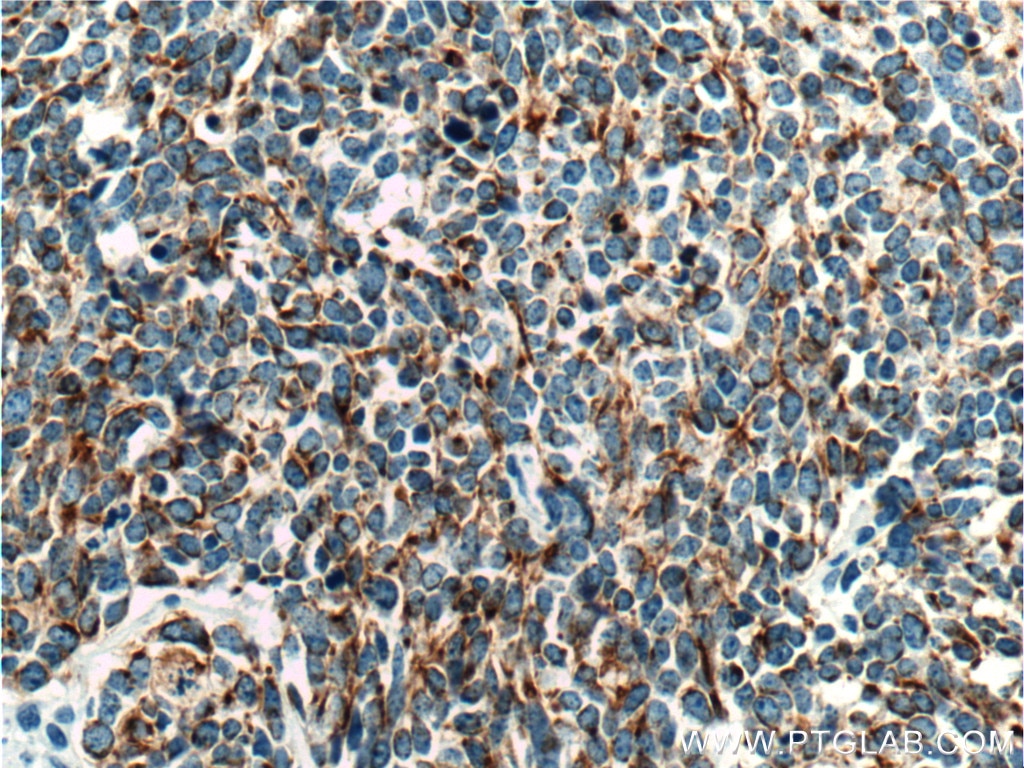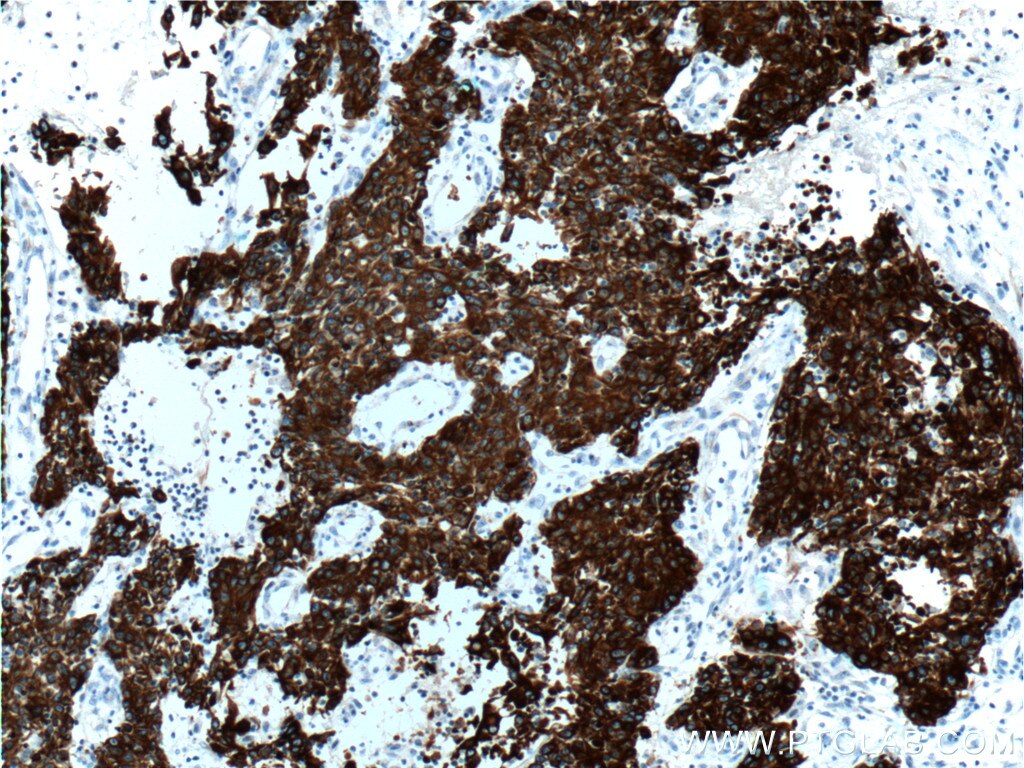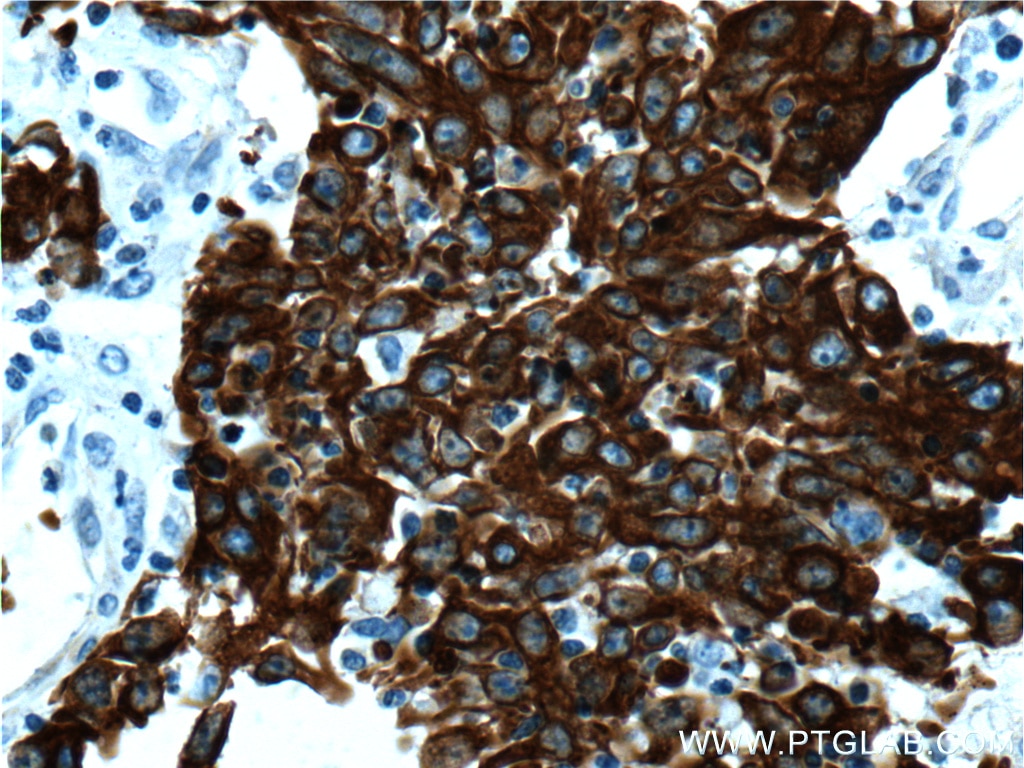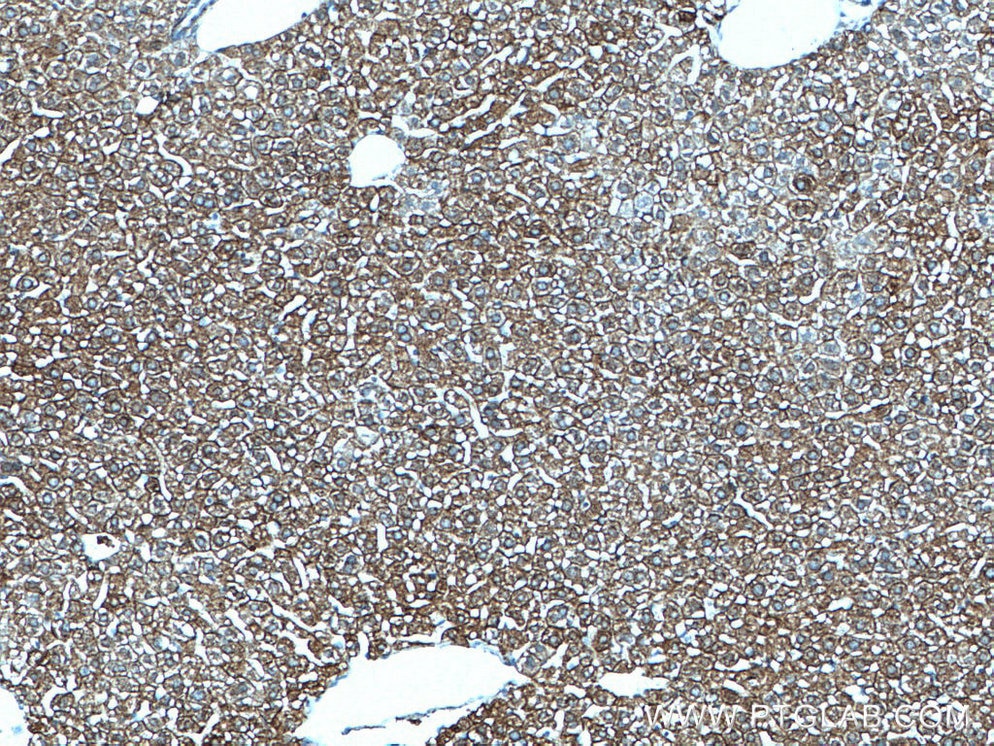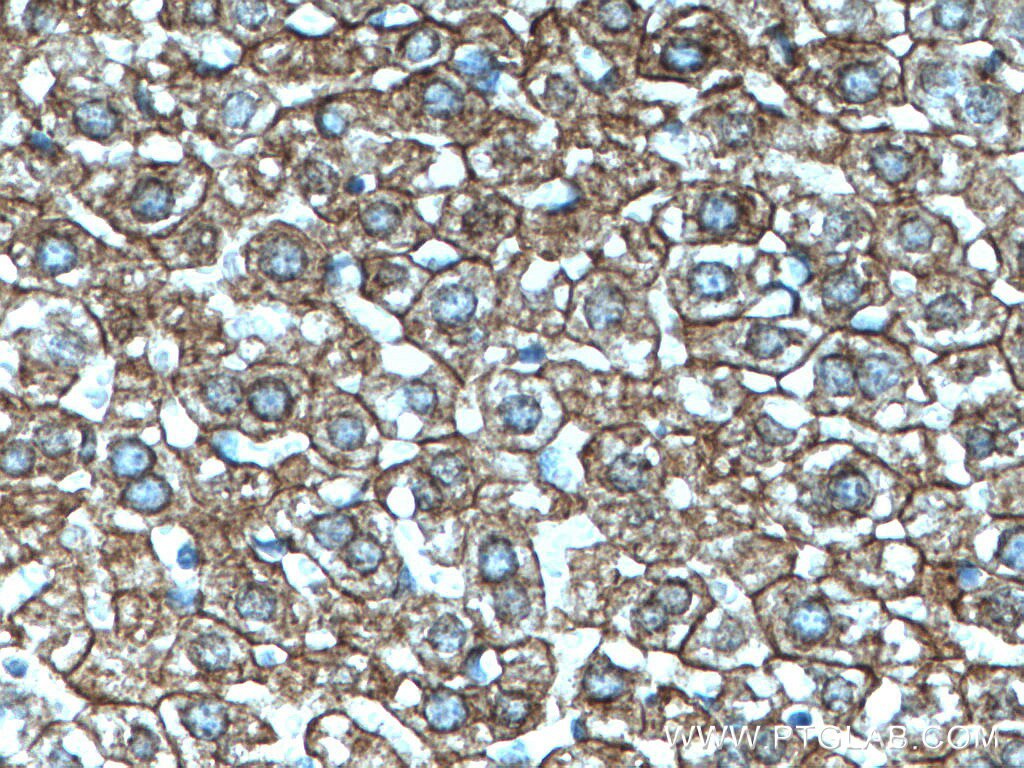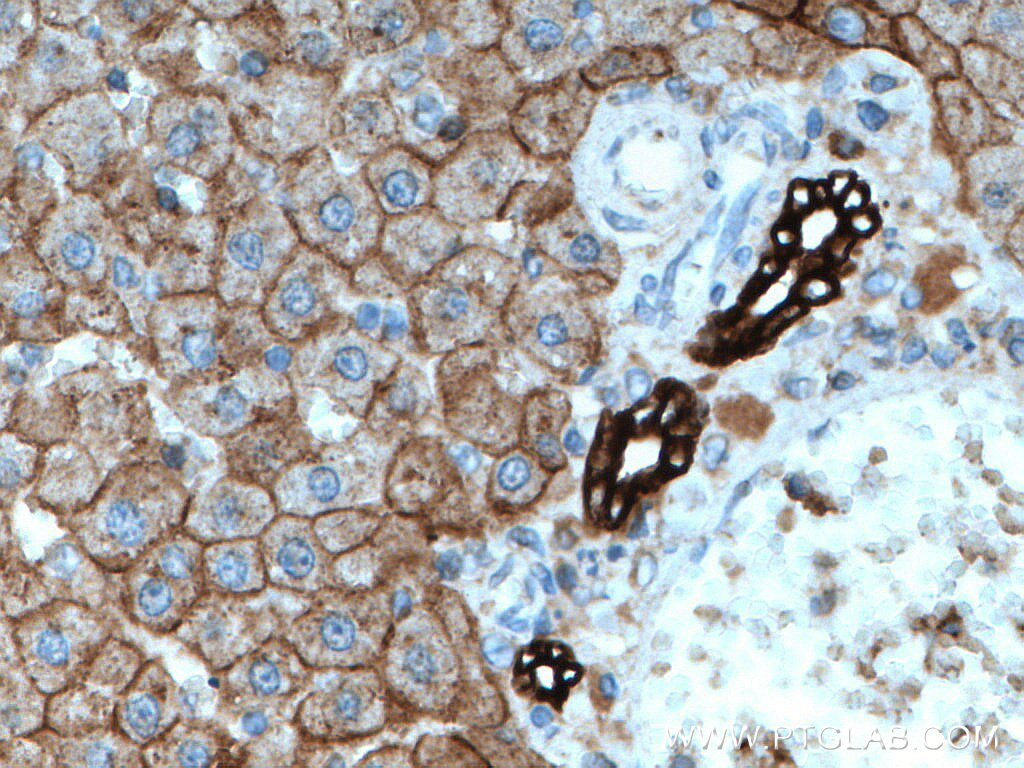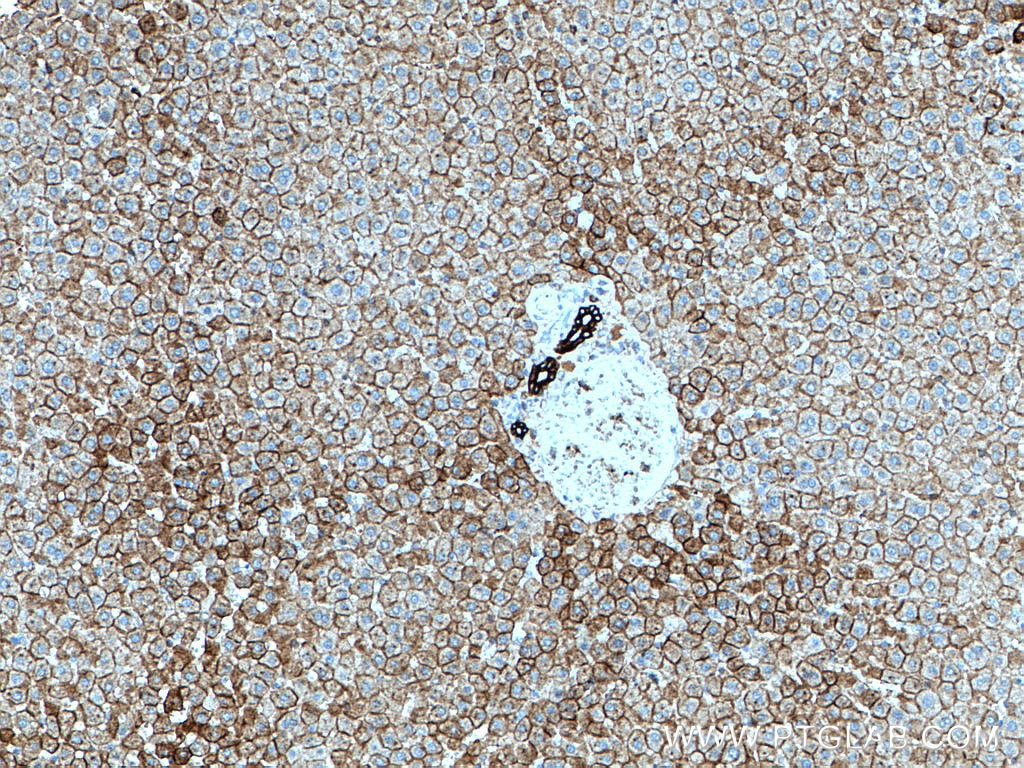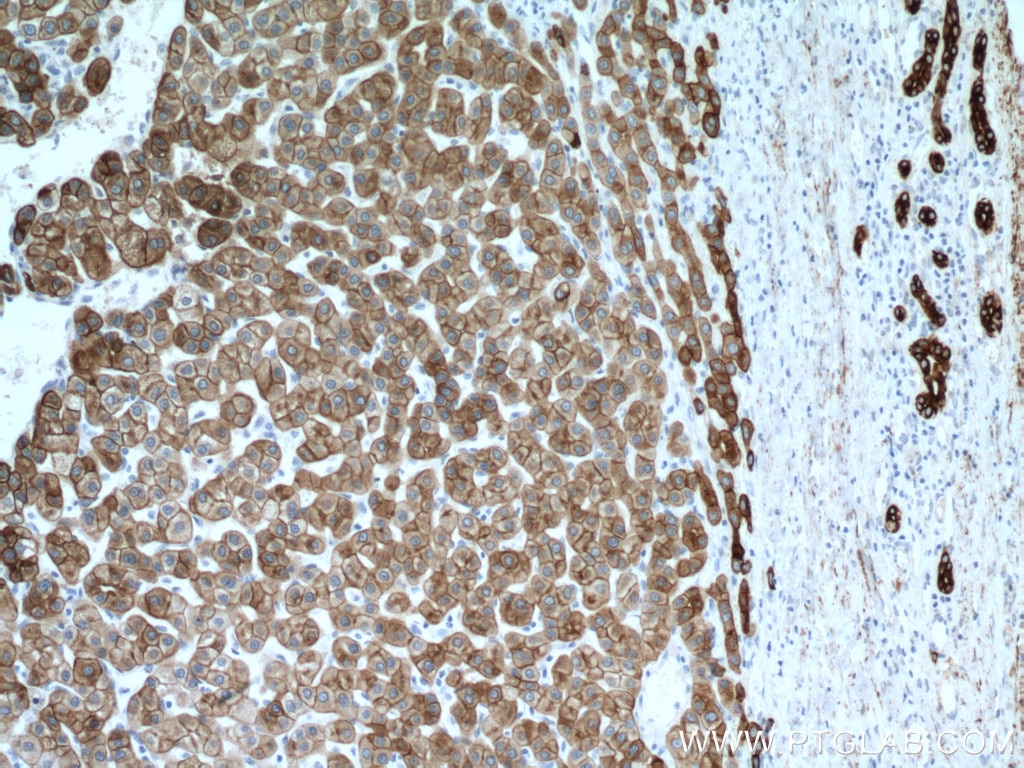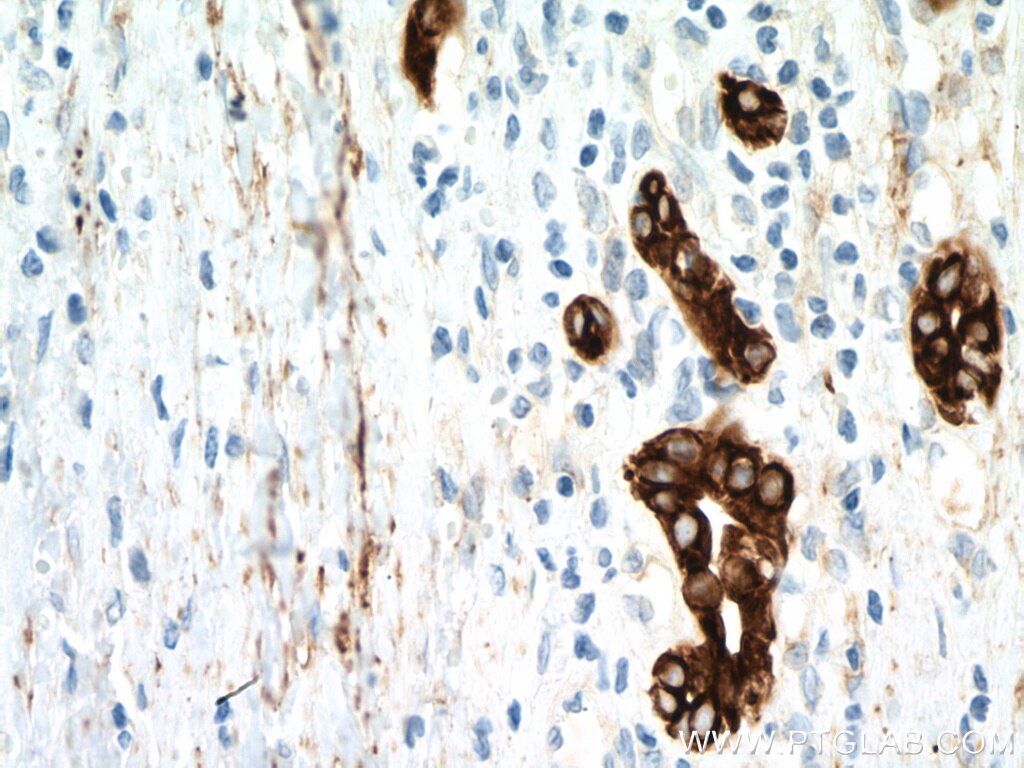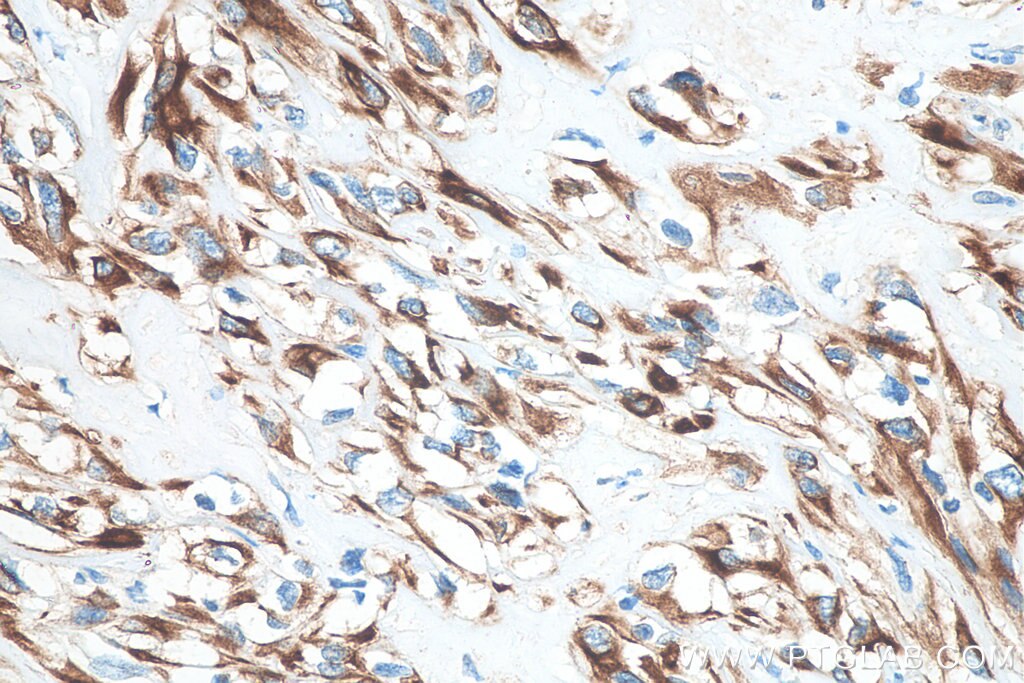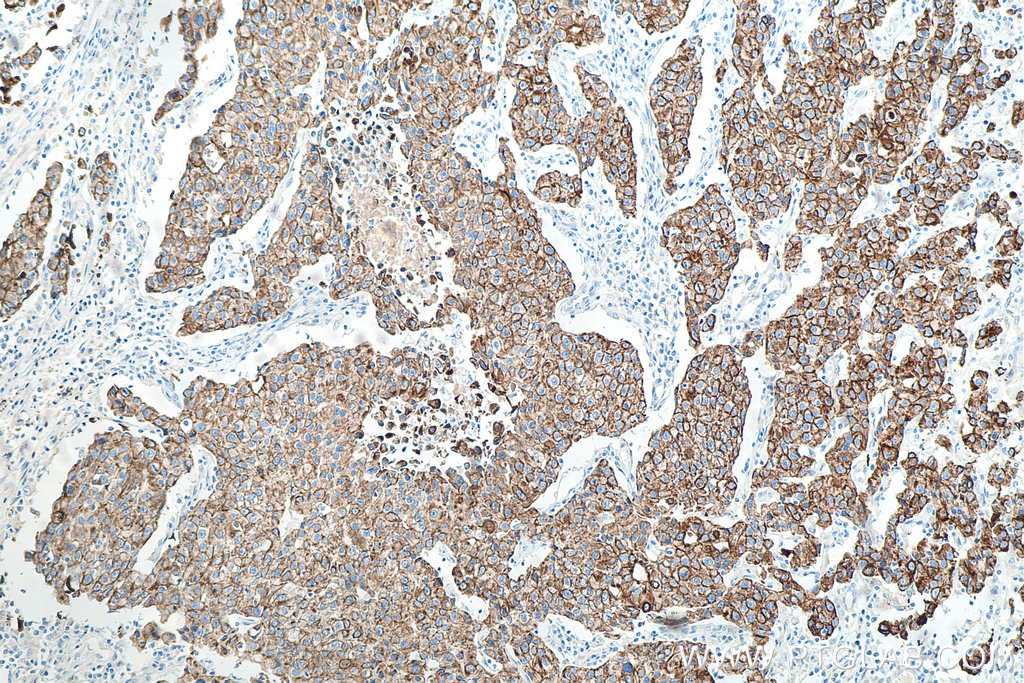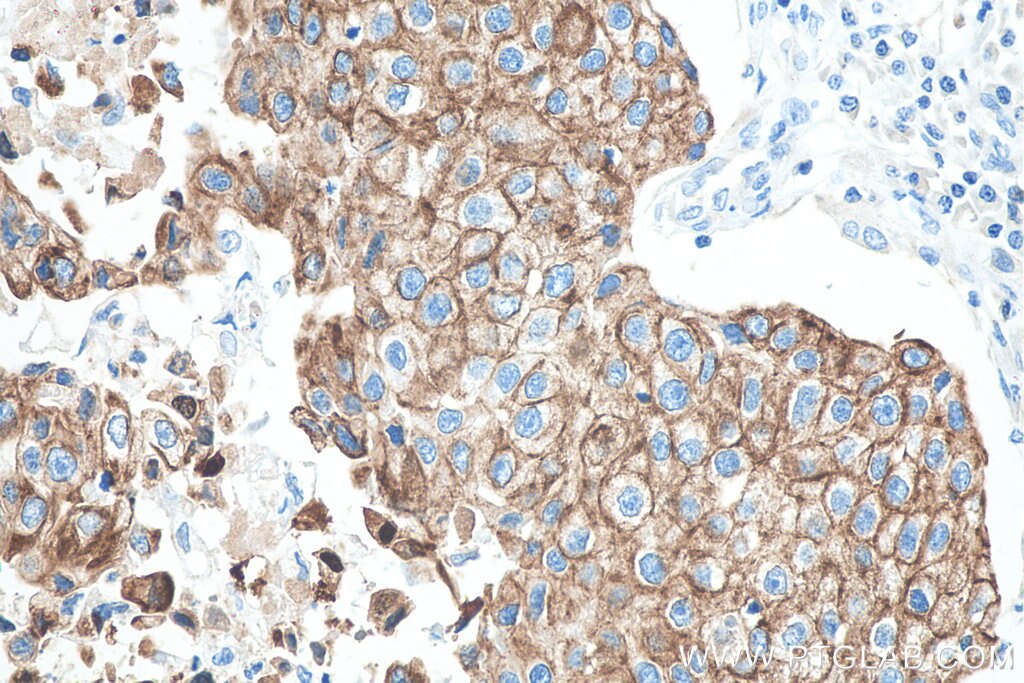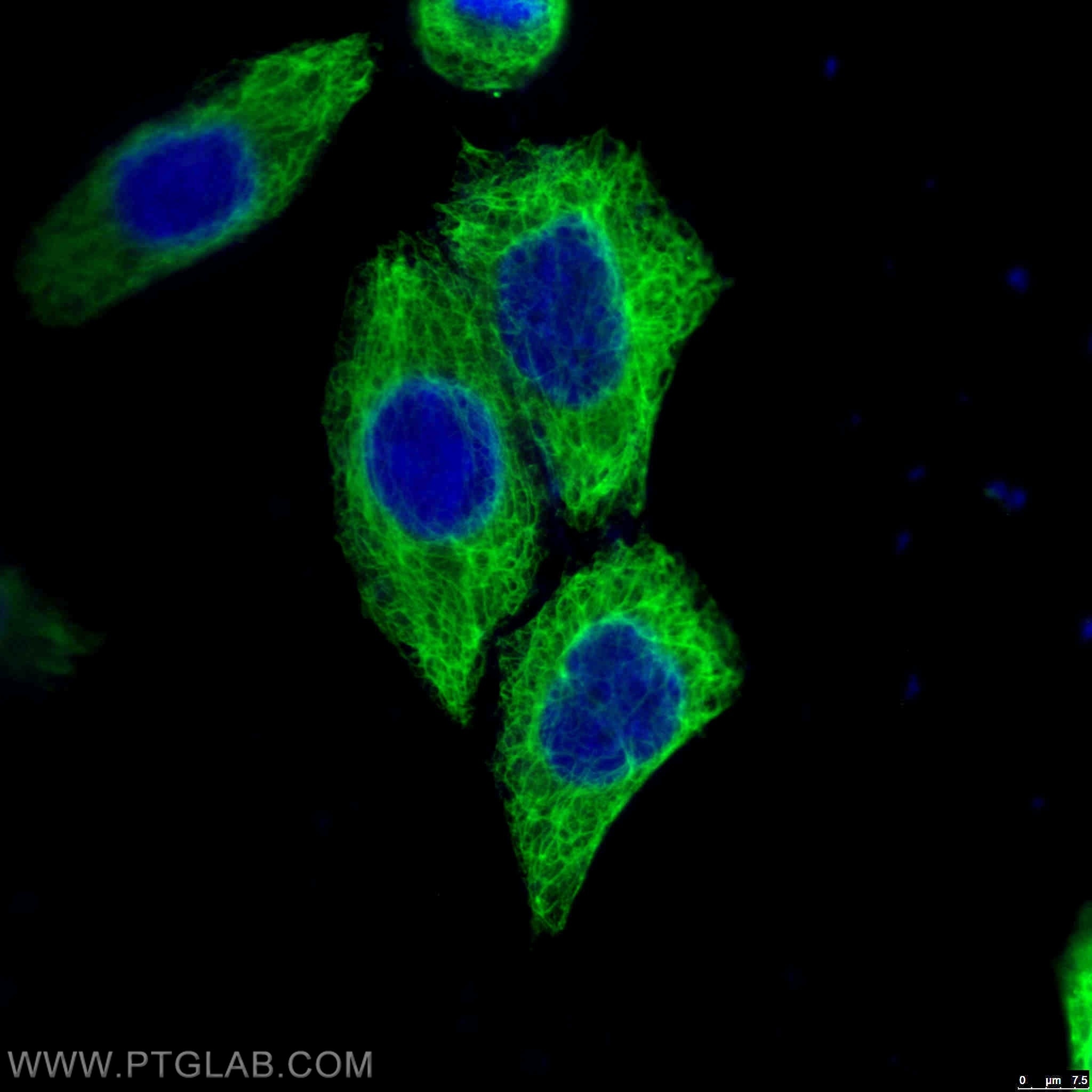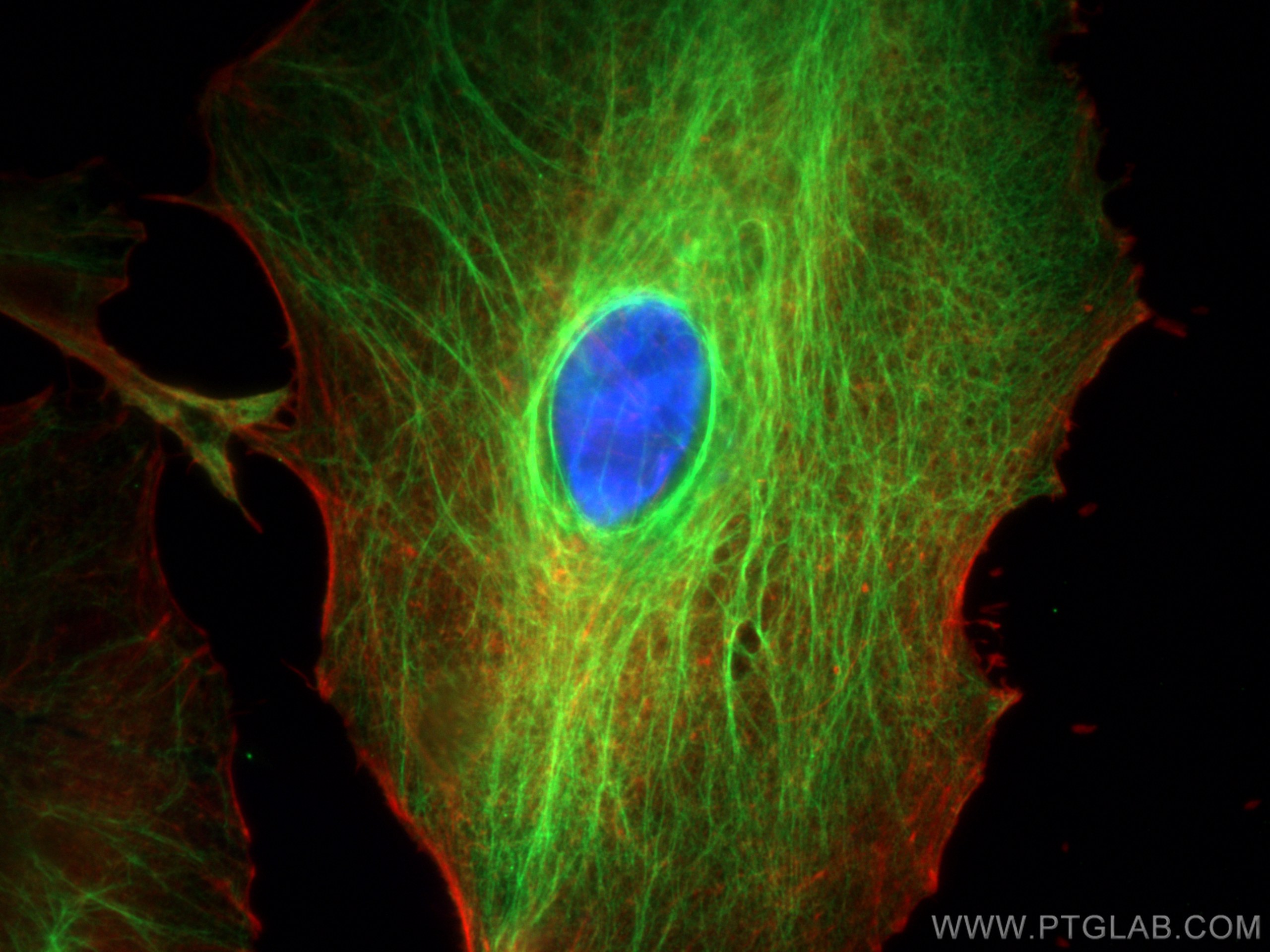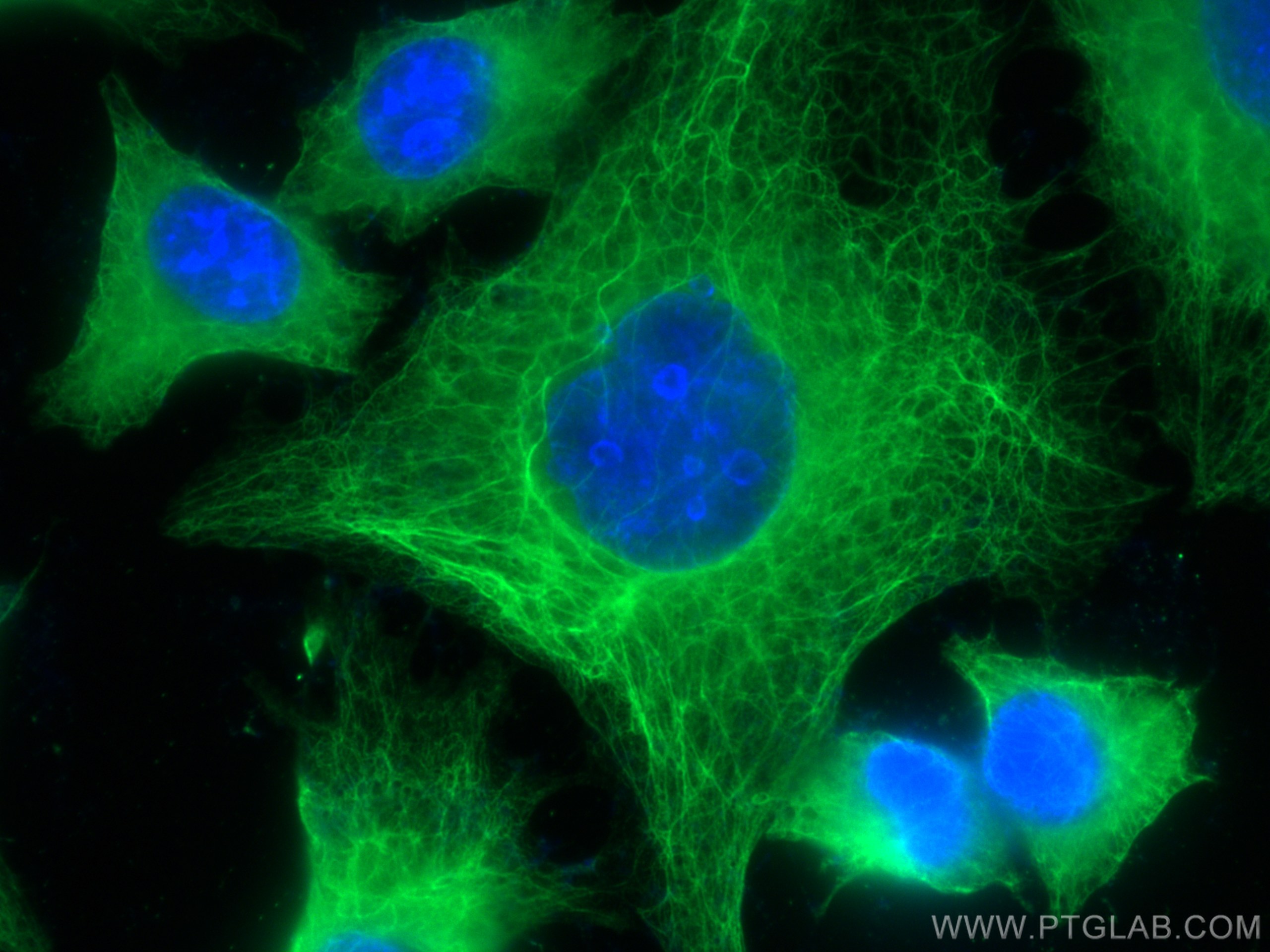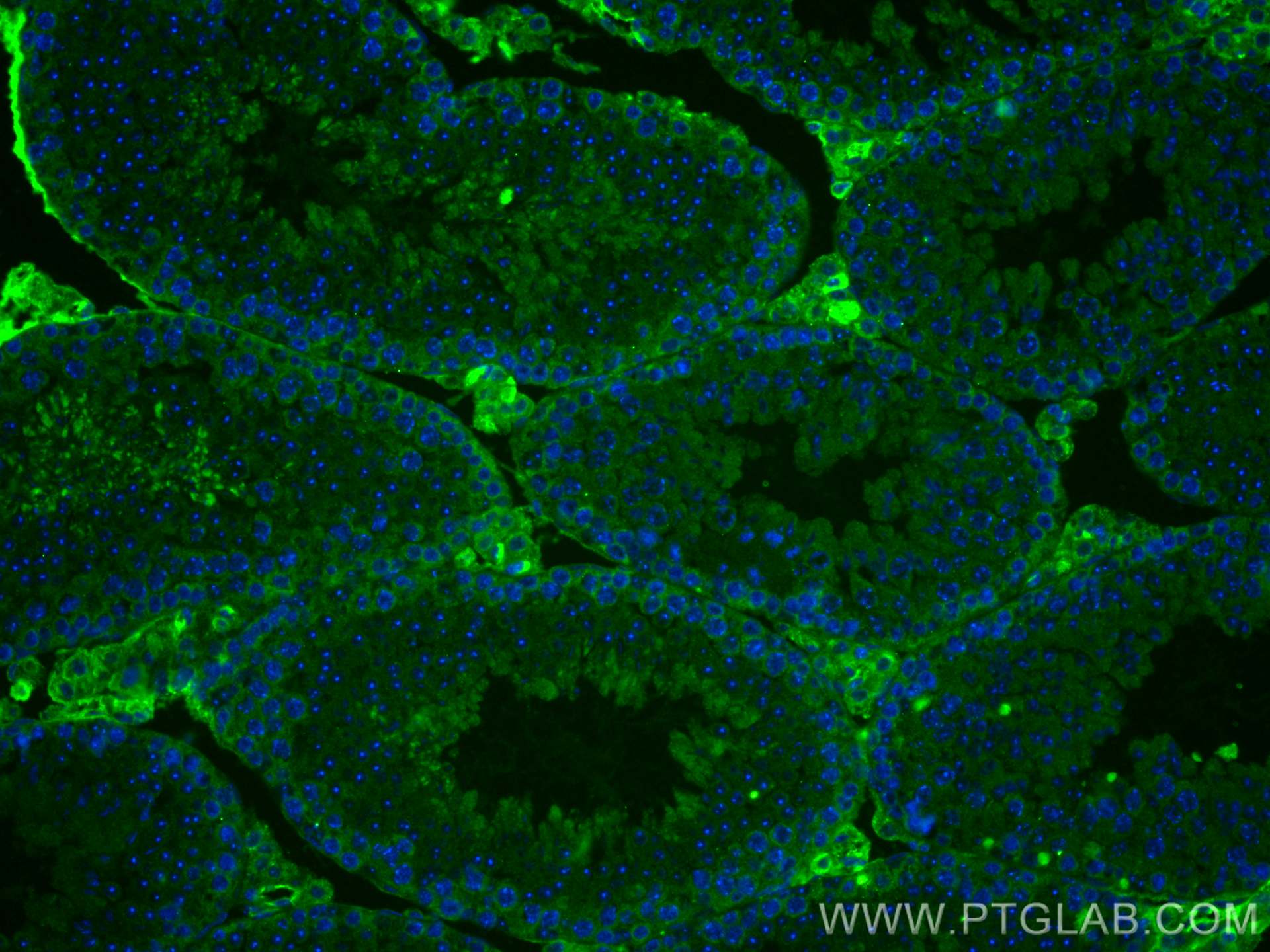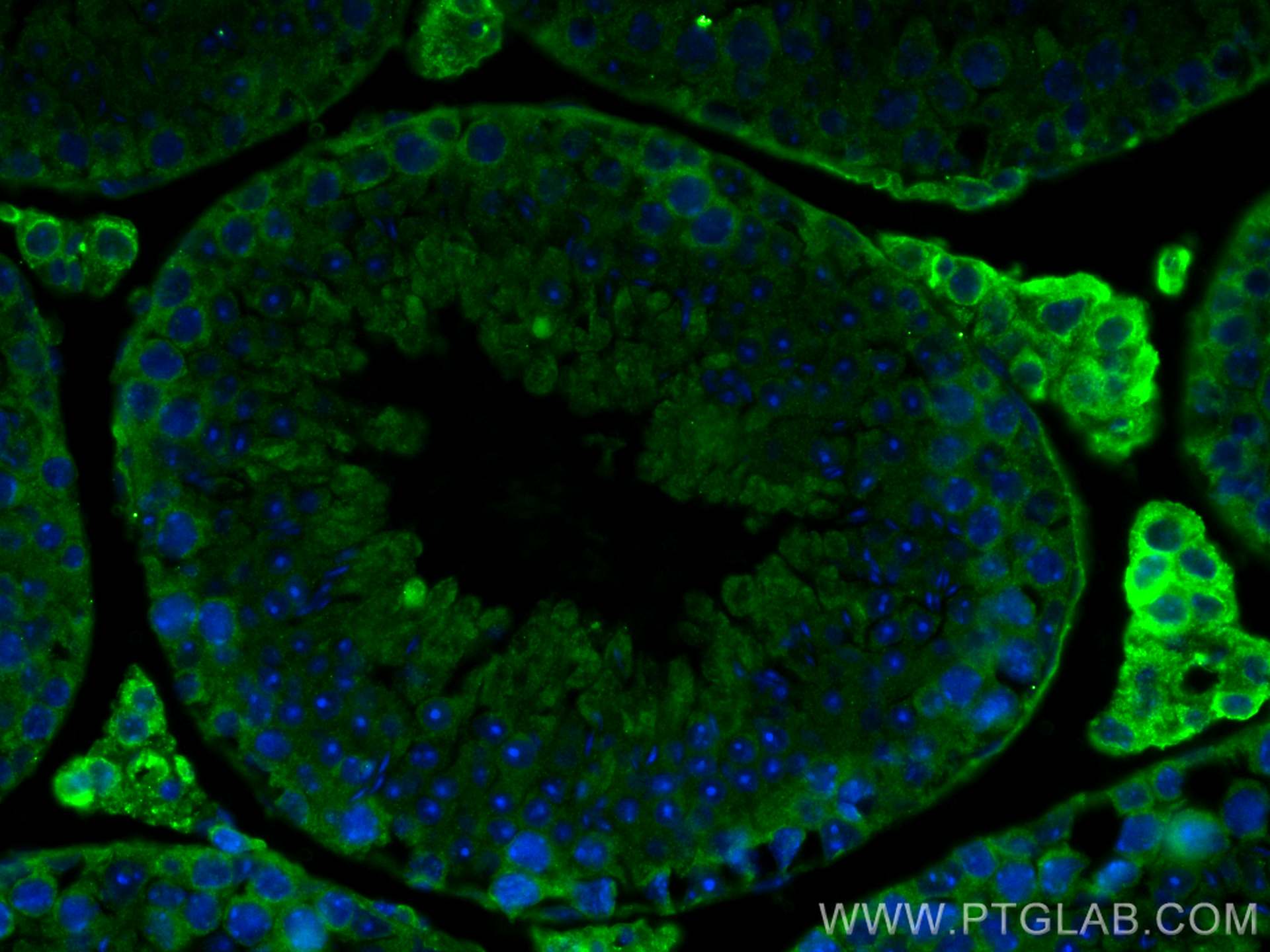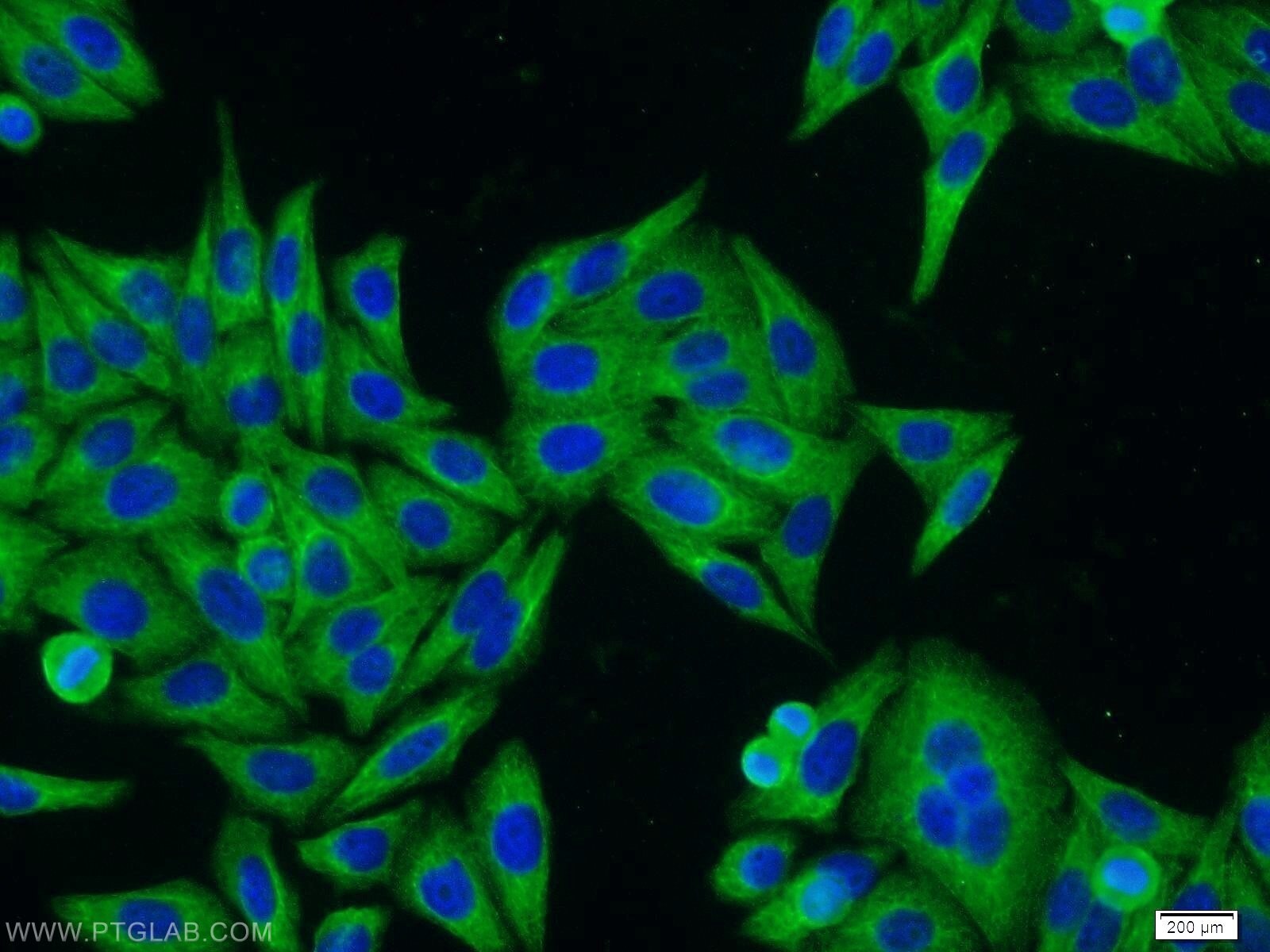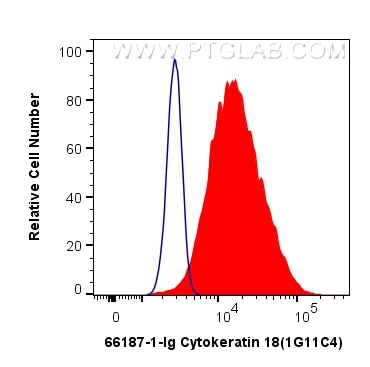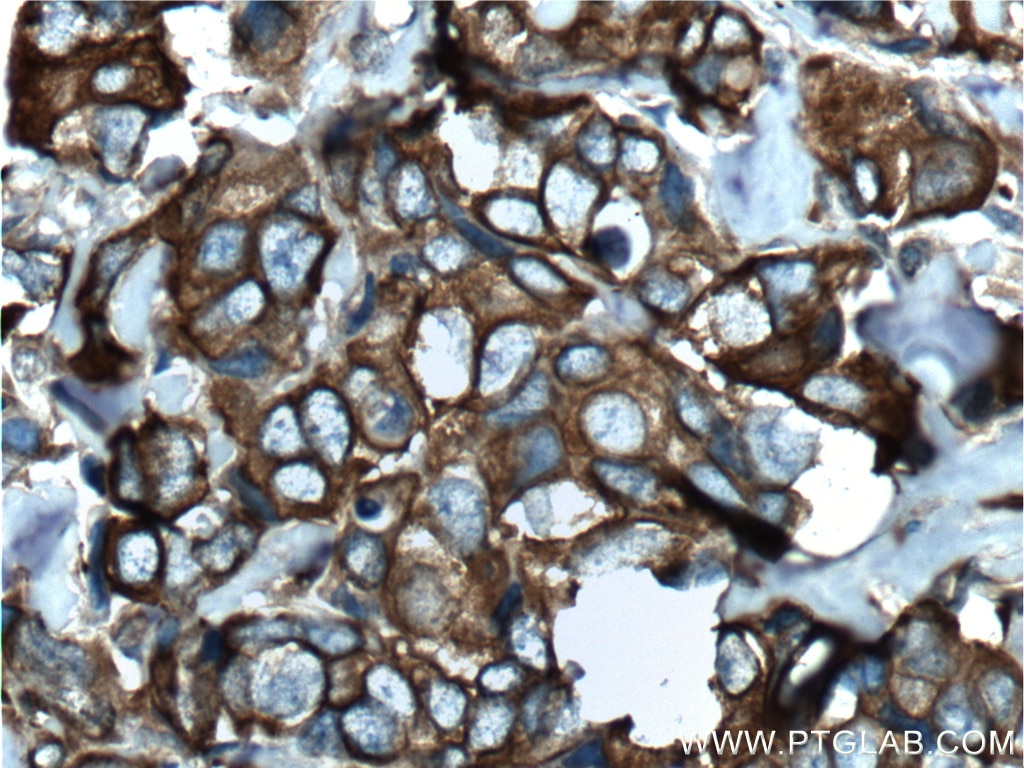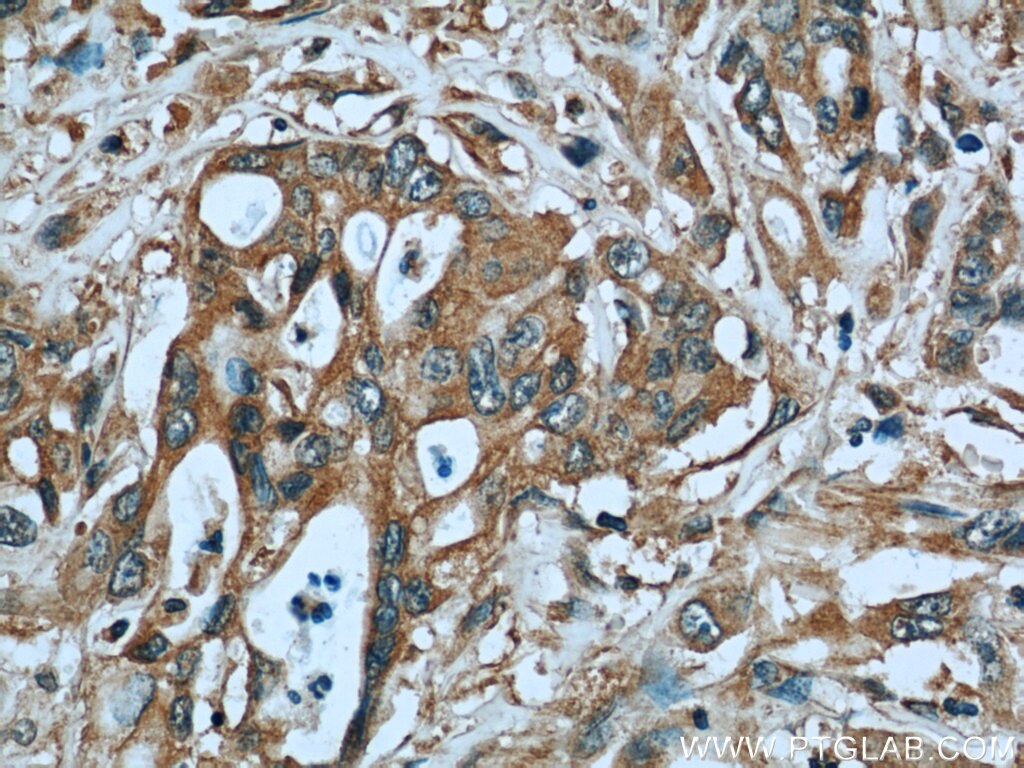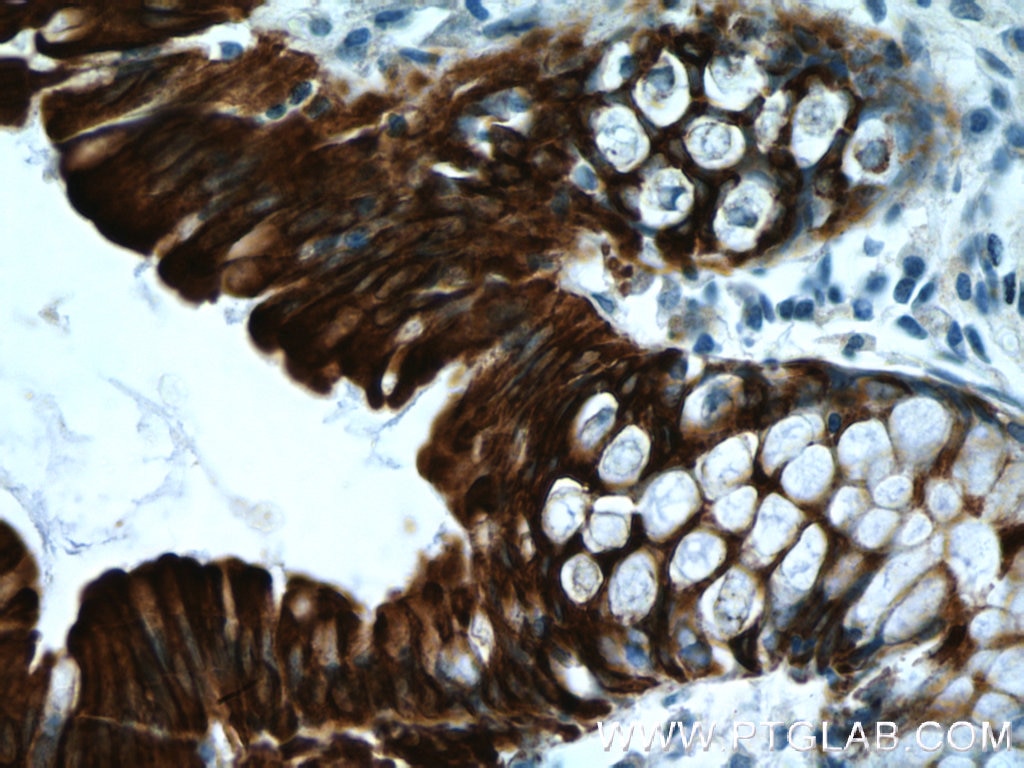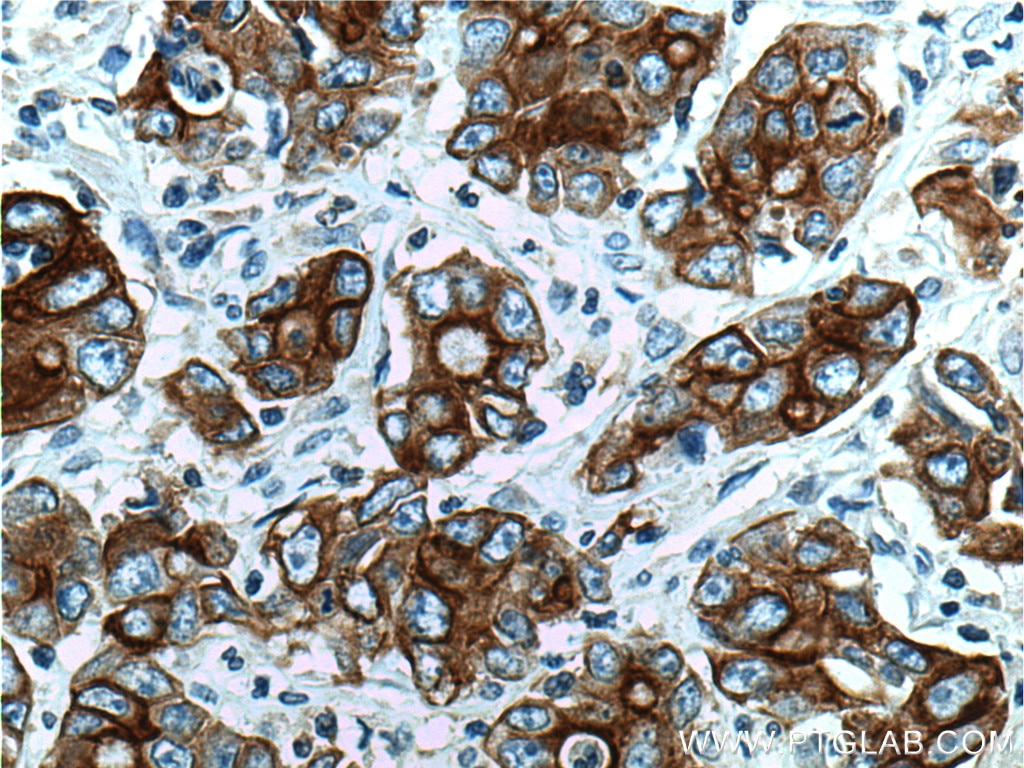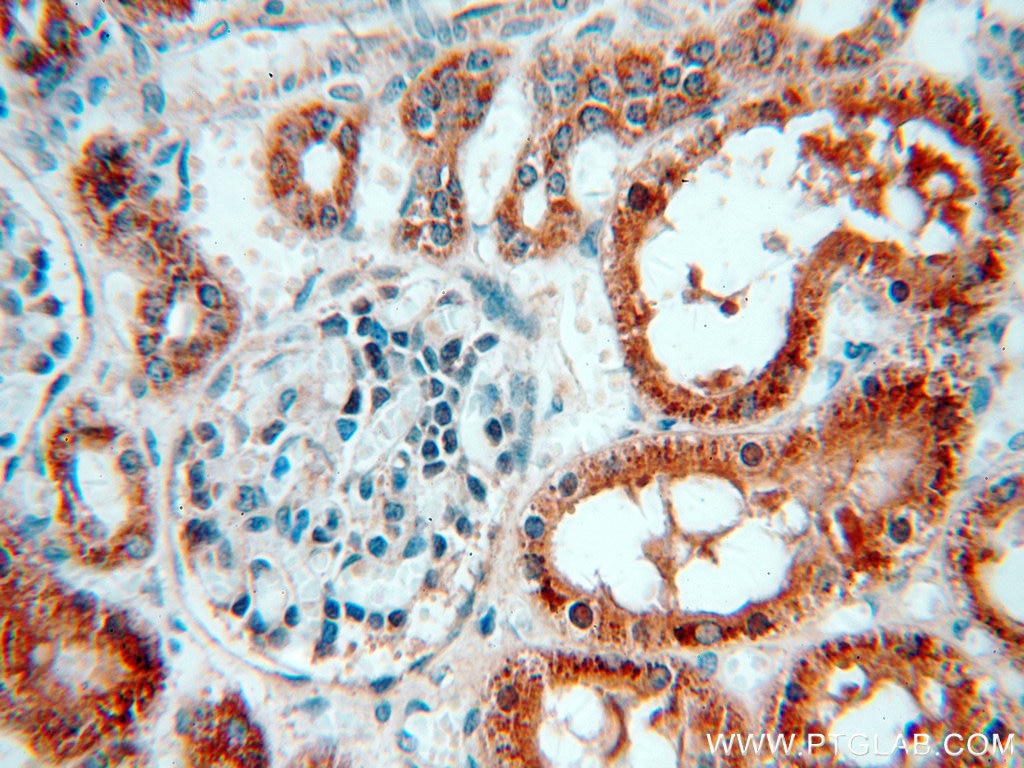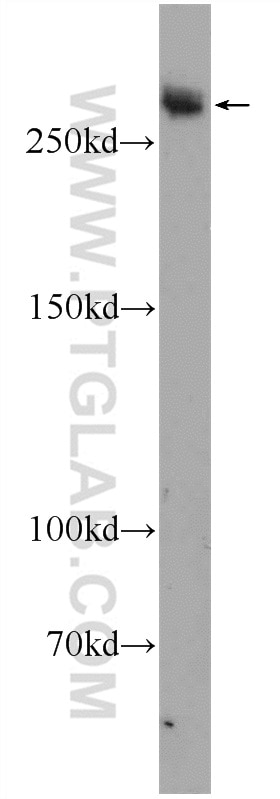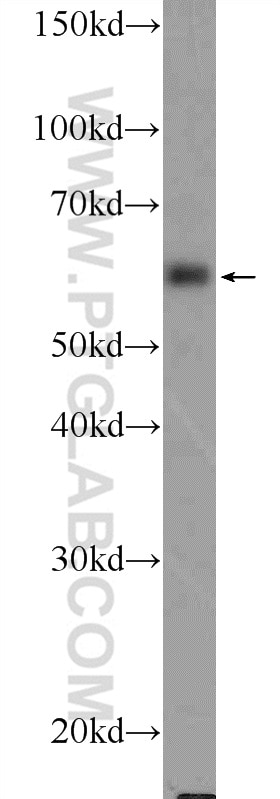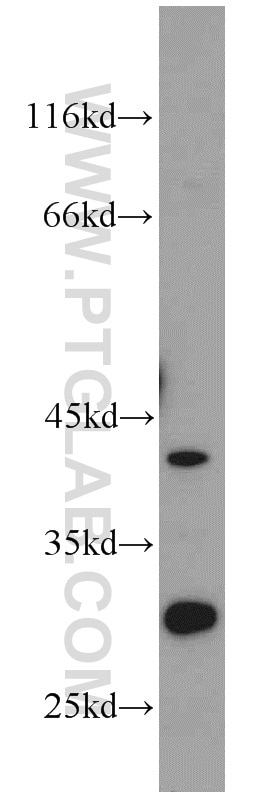Anticorps Monoclonal anti-Cytokeratin 18
Cytokeratin 18 Monoclonal Antibody for FC, IF, IHC, WB, ELISA
Hôte / Isotype
Mouse / IgG1
Réactivité testée
Humain, porc, rat, souris
Applications
WB, IHC, IF, FC, ELISA
Conjugaison
Non conjugué
CloneNo.
1G11C4
N° de cat : 66187-1-Ig
Synonymes
Galerie de données de validation
Applications testées
| Résultats positifs en WB | cellules HCT 116, cellules 4T1, cellules A431, cellules COLO 320, cellules HeLa, cellules HepG2, cellules K-562, tissu cutané de porc |
| Résultats positifs en IHC | tissu rénal humain, tissu d'amygdalite humain, tissu de cancer du côlon humain, tissu de cancer du foie humain, tissu de cancer du poumon humain, tissu de cancer du sein humain, tissu de carcinome à cellules rénales humain, tissu hépatique de rat, tissu hépatique de souris, tissu hépatique humain, tissu rénal de souris il est suggéré de démasquer l'antigène avec un tampon de TE buffer pH 9.0; (*) À défaut, 'le démasquage de l'antigène peut être 'effectué avec un tampon citrate pH 6,0. |
| Résultats positifs en IF | cellules A549, cellules HeLa, cellules HepG2, cellules HUVEC, tissu testiculaire de souris |
| Résultats positifs en cytométrie | cellules HeLa, |
Dilution recommandée
| Application | Dilution |
|---|---|
| Western Blot (WB) | WB : 1:20000-1:100000 |
| Immunohistochimie (IHC) | IHC : 1:600-1:2000 |
| Immunofluorescence (IF) | IF : 1:200-1:800 |
| Flow Cytometry (FC) | FC : 0.40 ug per 10^6 cells in a 100 µl suspension |
| It is recommended that this reagent should be titrated in each testing system to obtain optimal results. | |
| Sample-dependent, check data in validation data gallery | |
Applications publiées
| WB | See 2 publications below |
| IHC | See 3 publications below |
| IF | See 7 publications below |
| FC | See 1 publications below |
Informations sur le produit
66187-1-Ig cible Cytokeratin 18 dans les applications de WB, IHC, IF, FC, ELISA et montre une réactivité avec des échantillons Humain, porc, rat, souris
| Réactivité | Humain, porc, rat, souris |
| Réactivité citée | Humain, souris |
| Hôte / Isotype | Mouse / IgG1 |
| Clonalité | Monoclonal |
| Type | Anticorps |
| Immunogène | Cytokeratin 18 Protéine recombinante Ag1260 |
| Nom complet | keratin 18 |
| Masse moléculaire calculée | 48 kDa |
| Poids moléculaire observé | 48 kDa |
| Numéro d’acquisition GenBank | BC000180 |
| Symbole du gène | KRT18 |
| Identification du gène (NCBI) | 3875 |
| Conjugaison | Non conjugué |
| Forme | Liquide |
| Méthode de purification | Purification par protéine A |
| Tampon de stockage | PBS avec azoture de sodium à 0,02 % et glycérol à 50 % pH 7,3 |
| Conditions de stockage | Stocker à -20°C. Stable pendant un an après l'expédition. L'aliquotage n'est pas nécessaire pour le stockage à -20oC Les 20ul contiennent 0,1% de BSA. |
Informations générales
Keratins are a large family of proteins that form the intermediate filament cytoskeleton of epithelial cells, which are classified into two major sequence types. Type I keratins are a group of acidic intermediate filament proteins, including K9-K23, and the hair keratins Ha1-Ha8. Type II keratins are the basic or neutral courterparts to the acidic type I keratins, including K1-K8, and the hair keratins, Hb1-Hb6. KRT18, also named as CYK18, PIG46 and K18, is the most commonly found members of the intermediate filament gene family. KRT18 is a type I keratin which is found primarily in non squamous epithelia and is present in a majority of adenocarcinomas and ductal carcinomas but not in squamous cell carcinomas.
Protocole
| Product Specific Protocols | |
|---|---|
| WB protocol for Cytokeratin 18 antibody 66187-1-Ig | Download protocol |
| IHC protocol for Cytokeratin 18 antibody 66187-1-Ig | Download protocol |
| IF protocol for Cytokeratin 18 antibody 66187-1-Ig | Download protocol |
| Standard Protocols | |
|---|---|
| Click here to view our Standard Protocols |
Publications
| Species | Application | Title |
|---|---|---|
Redox Biol ACSL4 deficiency confers protection against ferroptosis-mediated acute kidney injury. | ||
J Pathol Histone demethylase PHF8 drives neuroendocrine prostate cancer progression by epigenetically upregulating FOXA2. | ||
Hum Reprod T-cadherin inhibits invasion and migration of endometrial stromal cells in endometriosis. | ||
Stem Cell Res Ther Expansion of mouse castration-resistant intermediate prostate stem cells in vitro | ||
Commun Biol Single-cell analysis supports a luminal-neuroendocrine transdifferentiation in human prostate cancer. | ||
Foods Mutation of Signal Transducer and Activator of Transcription 5 (STAT5) Binding Sites Decreases Milk Allergen αS1-Casein Content in Goat Mammary Epithelial Cells. |
